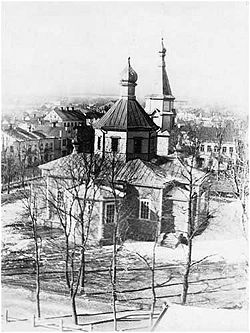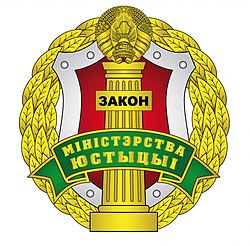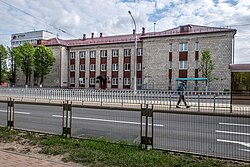The system of vital records in Belarus has evolved significantly over time, reflecting changes in the country's political and social landscape. This system, responsible for registering key life events such as births, marriages, and deaths, is crucial for both administrative purposes and the protection of individual rights.
History of Vital records in BelarusHistory of Vital records in Belarus
Pre-1917 periodPre-1917 period

Before the October Revolution of 1917, the regulation of marriage and family relations in Belarus was under the jurisdiction of the church, which maintained its own records. The Russian Orthodox Church handled the registration of births, marriages, and deaths through parish metric books, as mandated by Peter the Great in 1721. All Orthodox citizens were required to be registered with their local church parishes.
Post-1917 revolutionPost-1917 revolution
The history of civil registry bodies in Belarus began with the adoption of the Decree "On Civil Marriage, on Children, and on Keeping Books of Civil Status Acts" by the All-Russian Central Executive Committee and the Council of People’s Commissars of the RSFSR on December 18, 1917. This decree established that only civil marriages registered in civil registry departments were recognized, marking a shift from ecclesiastical to civil control of vital records. The Decree "On Divorce" of December 19, 1917, further allowed for divorce by mutual consent in civil registry departments.
To implement the December 18, 1917, decree, the People’s Commissariat of Justice and the People’s Commissariat for Local Government issued instructions on January 4, 1918, for the establishment of civil registry departments at local administrative offices. These departments were tasked with the registration of births, marriages, and deaths.
The 1918 Code of Laws on Civil Status Acts, Marriage, Family, and Guardianship Rights formalized the structure and duties of civil registry offices. The code emphasized monogamy, the voluntary nature of marriage, and the protection of motherhood and childhood. Local civil registry departments were responsible for registering all events affecting civil status within their jurisdiction, such as births, deaths, marriages, and divorces.
1920s-1930s1920s-1930s
During the 1920s, the transition from church to secular registration was completed, with metric book archives fully transferred to civil registry offices. In 1934, civil registry offices were incorporated into the NKVD (People’s Commissariat of Internal Affairs), with employees holding police ranks. By 1937, the NKVD’s Civil Status Acts Department oversaw civil registry work across the USSR.
Post-1956 ReformsPost-1956 Reforms
In 1956, civil registry offices were removed from the Ministry of Internal Affairs and transferred to local councils’ executive committees. The 1969 Code of Laws on Marriage and Family regulated marriage and family relations and outlined the operations of civil registry offices in Belarus until 1999.
Post-1991 independencePost-1991 independence

Following Belarus's independence in the early 1990s, new regulations and procedures for civil registry bodies were established. In 2006, a Presidential Decree incorporated civil registry bodies into the Ministry of Justice of the Republic of Belarus to improve the registration of civil status acts and enhance compliance with legal requirements.
Currently, Belarus has 148 civil registry offices, three Houses of Civil Ceremonies, one House of Marriage, and seven archives under the jurisdiction of the Ministry of Justice. The civil registry bodies strive to uphold the principles of legality and timely registration of civil status acts while fostering cultural traditions and making ceremonies memorable for citizens.[1]
Where to find vital records in BelarusWhere to find vital records in Belarus
Vital records in Belarus are maintained and managed by the Civil Registry Offices (ZAGS) throughout the country. These offices are integral to the administration of personal status laws and the documentation of significant life events. Here is an overview of where and how to access these records.
Civil Registry Offices (ZAGS)Civil Registry Offices (ZAGS)
Local OfficesLocal Offices
Belarus is home to 148 Civil Registry Offices, three Houses of Civil Ceremonies, and one House of Marriage. These offices are located in major cities and towns, providing services to the local population. Each local ZAGS office is responsible for registering and maintaining records for the events occurring within its jurisdiction.
Central archivesCentral archives
In addition to local offices, vital records are also archived at regional and national levels. These archives include historical records and documents from across the country. The main archive of ZAGS is located in Minsk.
State archivesState archives

Each region in Belarus has its own state archive that maintains older vital records. These archives are valuable for genealogical research and legal verification of past events. The National Historical Archives in Minsk holds extensive collections of historical vital records. These include records from the pre-Soviet and Soviet periods, accessible for research and verification purposes.
Accessing recordsAccessing records
In-Person requestsIn-Person requests
Individuals can visit local ZAGS offices or regional archives to request copies of vital records. It is advisable to bring identification and any relevant information (e.g., dates, names) to facilitate the search process.
Online servicesOnline services
Belarus has been modernizing its civil registration system, and some services are available online. The official websites of the Ministry of Justice and regional executive committees often provide information on how to request records electronically.
Legal requirementsLegal requirements
Access to vital records may be restricted to protect privacy. Typically, only the individual named in the record or their legal representatives can obtain certified copies. Requests for older, archival records may have fewer restrictions, particularly for genealogical purposes.
See moreSee more
Search for vital records of BelarusSearch for vital records of Belarus
Explore more about vital records in BelarusExplore more about vital records in Belarus
- Vital records of Belarus collection catalogue at MyHeritage
- Ethnicity map of Belarus at MyHeritage
- JewishGen Belarus Database
- National Historical Archives of Belarus
References
- ↑ ИЗ ИСТОРИИ ОРГАНОВ ЗАГСА БЕЛАРУСИ. Главное управление юстиции Брестского областного исполнительного комитета.


